In many conifers, pollen cones occur on the lower portion of the crown while seed cones occur in the upper third as an evolutionary adaptation to reduce selfing.
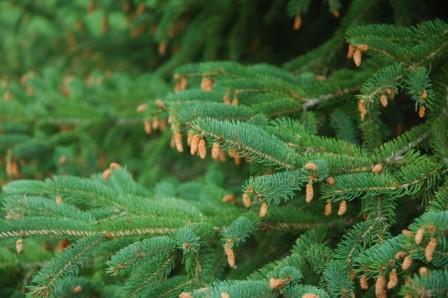

We’re beginning to see signs that we may be getting a lot of calls on spruces this year similar ones we experienced a couple of years ago. Homeowners and landscapers are calling in with reports of brown ‘growths’ on spruces – particularly white spruce and some on Colorado blue spruce. The growths can be quite noticeable, even from a distance and cause trees to take on a brownish cast; usually most prevalent on the lower 2/3rds or so of the crown. What’s going on?
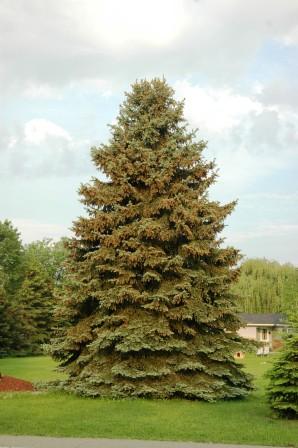
Note: I also discuss this problem in my article in this week’s MSU Extension Nursery and Landscape CAT Alert – but don’t go there ‘til you’ve chimed in here. Otherwise we call that ‘not in the spirit of the challenge’.
For the past ten years or so I’ve worked to try to transfer information about horticulture to people. It sounds simple, but it actually took a lot of time and effort to figure out the best way to do it, and I’m still not there yet — and probably never will be. The reason that I mention this is because I appreciate it when another horticulturist, such as my fellow garden professors, work to get information about horticulture out to the public. So yesterday we had a speaker come to our depoartment to give our annual end of the year lecture — It’s kind of a big deal for us — We usually have a big name person (horticulturally speaking of course) and pay him or her pretty well and have a reception. It’s nice. We also hand out scholarships to our undergraduates who earned them and any awards which we have to give. But anyway, back to the speaker. This year we had a guy come in who I’d never heard of before besides some strong recommendations from some of my colleagues here in the department. I also did a cursory check of his website. I liked what I saw, but I wasn’t blown away. Sometimes I’m such a dingbat. Simply put, this guy gave one of the top two or three horticultural (actually I should say botanical — it’s more botany than horticulture) presentations which I have seen. His name is Roger Hangarter and he is a professor at Indiana University. In a nutshell he films plant’s moving using time-lapse photography to demonstrate important concepts. Here is one of his websites:
http://plantsinmotion.bio.indiana.edu/plantmotion/starthere.html
But if you do a google search for him he has a lot of other things on different sites. He has even created a traveling display for museums called slowlife. Very, very cool. There aren’t a lot of people who I’m in awe of — but this guy is one of them. If you have a garden club or run a master gardener program you NEED to get this guy on your calendar if you can.
Among other things, part of my job involves reviewing educational materials for use in WSU’s Extension programs related to urban horticulture. One of the books is “Gaia’s Garden: a guide to home-scale permaculture” (T. Hemenway). It occurred to me that my review might also be of interest to our GP readers.
I’ve created a fairly extensive review and I will break it into separate posts over the next few weeks. So let’s start the discussion off with a topic we already know is inflammatory: invasive species. To be clear, we are not talking about the many introduced species, plants and animals alike, who appear to be well-behaved in our country. Here’s my take on “The Natives versus Exotics Debate” (pp. 12-17):
The author, with no formal training in biology past his bachelor’s degree, states that “calling a species ‘invasive’ is not good science.” This will come as news to researchers in the field of invasion biology. He blithely disregards the real environmental and economic damage caused by invasive species and erroneously believes that invasive species selectively appear only as a result of human-caused environmental disturbance. Apparently natural disturbances (from fire, volcanic eruption, flooding, etc.) don’t open themselves up for invasion (again, a notion that is incorrect and refuted by a number of obvious examples, such as the 1988 zebra mussel invasion of Lake St. Clair and the subsequent colonization of many freshwater habitats). The author seems not to understand that there may be unfilled niches in certain ecosystems that can be exploited by invasives, endangering native species whose niches may overlap; there are obvious lessons from Hawaii, Australia, and other parts of the world. In any case, the author’s naive tolerance of invasive species is a poor example to follow and certainly not based on current, mainstream science.
So, fans of permaculture, what do you think? If permaculture is a legitimate science-based practice, how do we reconcile the very real issue of invasive species? If you disagree with me, keep in mind one of the hallmarks of pseudoscience: attacking the motives or character of anyone who questions the claims. The arguments should contain content, not insults.
I’ll be posting my usual blog later today…but in the meantime we’ve got an invitation for you.
Are you, or someone else you know, a "Garden Professor?" In other words, do you use current, relevant plant and soil sciences to inform yourself and others? If so, we invite you to submit a guest posting to our blog.
We’ll post your article without editing, though we may make comments.
If you’d like, send a photograph of yourself and any other illustrations you want posted along with your blog.
We can’t offer any compensation other than the glory of being an online Garden Professor – but isn’t that enough? We think so!
If you or someone else you know is interested, please contact one of us directly. My email is lindacs@wsu.edu.
It’s that time of the semester to hand out the lovely SPOT evaluation forms (Student Perceptions Of Teaching) here at Virginia Tech. Students fill in the circles (number 2 pencil of course) as to how you rate as teacher, your knowledge of the field, the value of the textbook, etc. A box is available, though seldom used, for students to hand-write comments – to many of us, the most valuable part of the evaluation process. So as I was distributing the scan forms, I was thinking about feedback. It seems that in life, where feedback or comments are totally voluntary and no forms are forced upon you, the energy required to send a letter, email, or comment is often (not always) mustered only for negative feedback.
In the case of this blog (and many others), we have enjoyed amazingly positive and inquisitive comments, even if it’s just two or three for each post, as well as the occasional barb (just fine with me) . Our biggest "commentroversy" came with Linda’s post about International Ag Labs – the ensuing hoo-ha resulted in 102 comments due to a "defend the ship!" email sent out by the company, and many were decidedly in opposition to the post.
All to say: we’ve been at this Garden Professors thing for about 9 months now, and Linda, Jeff, Bert, and me would like to know what YOU, our dear blog-readers, THINK. Some of you comment fairly regularly – thank you Jimbo, Deb, Hap, Paul, et al. But I also know that’s just the tip of the iceberg.
Please take a moment, if you can, to weigh in:
– Are you happy with the diversity of posts, or do you want "science and only science" e.g. less garden products/pantyhose posts?
– Do you enjoy reading about our work with students? No? Well, tough! (just kidding).
– What topics would you like to see addressed in future posts by our GP squad? Can be broad or specific. [More on perennials, you say? 😉 ]
– Overall thoughts? The value (or lack thereof) of this blog to you and your garden, nursery, or landscape firm?
Any and all feedback will be appreciated by all of us here at The G-Prof.
So go ahead and comment, even if you’ve never done it before!
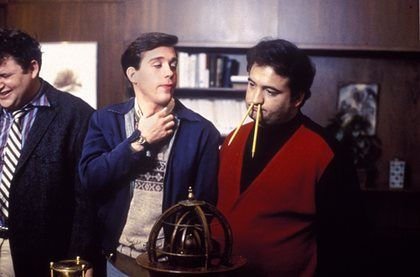
Don’t make us summon you to the Dean’s office! (Note #2 pencils at the ready.)
With the advent of Spring comes a myriad of calls on distressed plants from homeowners, nurseries and landscapers. One of our better tree service companies (I’ll call the owner/operator ‘Mark’ to protect his clients’ identities) in southeastern Michigan called with a series of problems this spring so I decided to take drive over and get a first hand look. We looked at several problems on plants ranging from trees to ground covers but there soon emerged an consistent thread: overwatering. Plant problems related to overwatering and poor soil drainage are among the most common landscape issues I see year in and year out. The stops I made with Mark last week were typical. Mark works in several very affluent suburbs around Detroit (I know readers around the country don’t associate Detroit and affluence, given our recent press, but there is still some serious money in the area). Some of Mark’s clients spend up to $20,000 per year just to maintain the trees and shrubs on their property – that’s not including lawn maintenance. Needless to say, these folks want everything perfect. In their effort to have their landscape look more perfect than the neighbors, the homeowners and their gardeners often go overboard – especially with irrigation. One of the things that caught my attention during our site inspection was recurring issues with Norway spruce. For the most part, we regard Norways as a cast iron plant and one of the last trees with which we’d expect to have problems. Yet we saw several instances were established specimens were suffering needle die-back and declining.
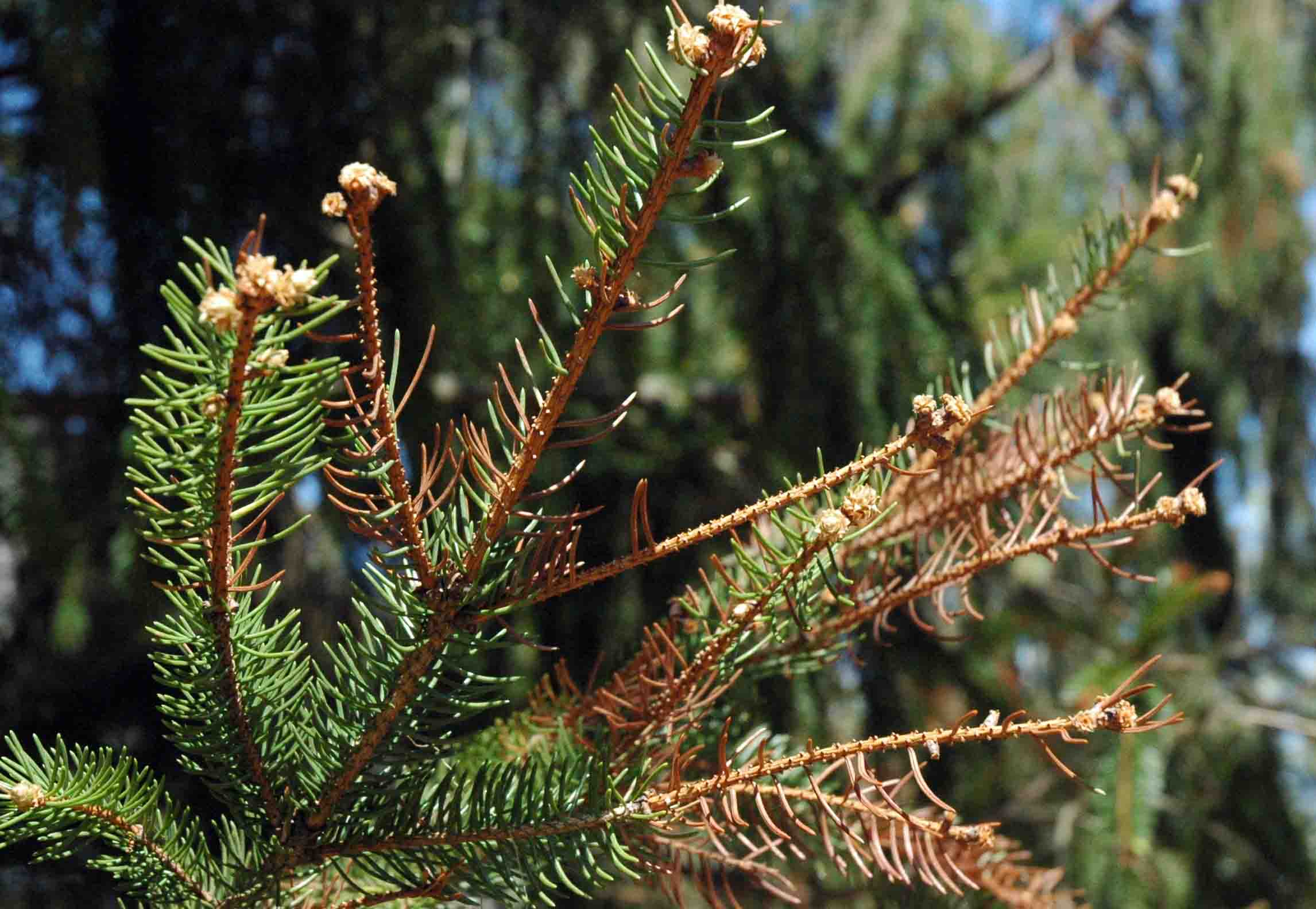
In each case the trees were irrigated in situations where they would likely grow well without supplemental watering. But the trees were surrounded by ground covers or annual beds with heavy soils that were heavily irrigated. Problems usually increased on down-slope positions.
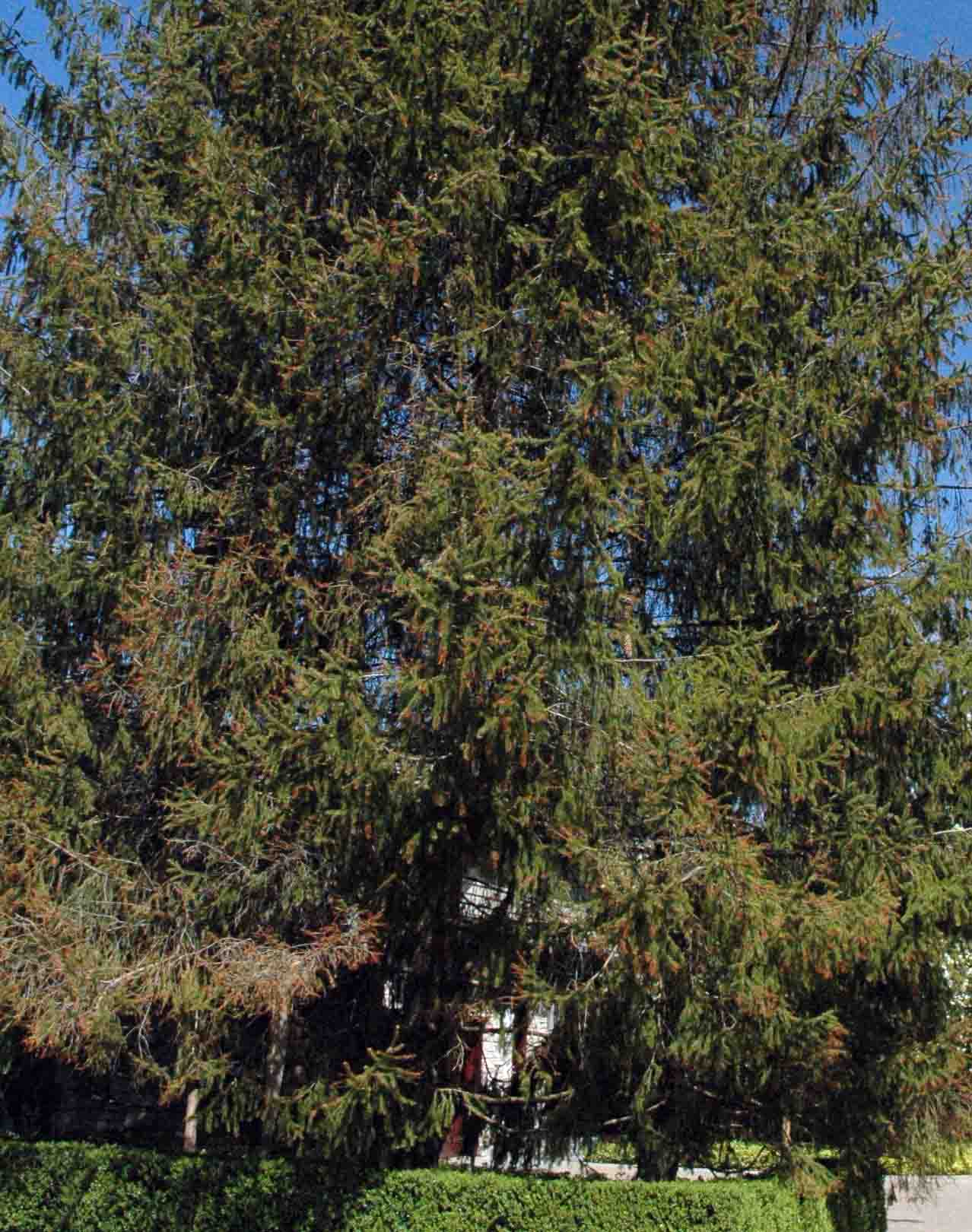
The solution? Back off the irrigation. Everyone knows trees need water, but roots their roots also need oxygen. At one site we visited, the homeowner already had his gardener running the irrigation system – in April! This is truly killing with kindness. Most established landscape trees, shrubs and perennials in this part of the world need little, if any, irrigation. Newly planted trees and shrubs need an occasional (weekly to bi-weekly) drink in the first year and some follow-up the second year. After that they can manage most years on our rainfall. In the end, a lot comes down to design. Establish thirsty annual beds where they can be irrigated without drowning hardier trees and shrubs.
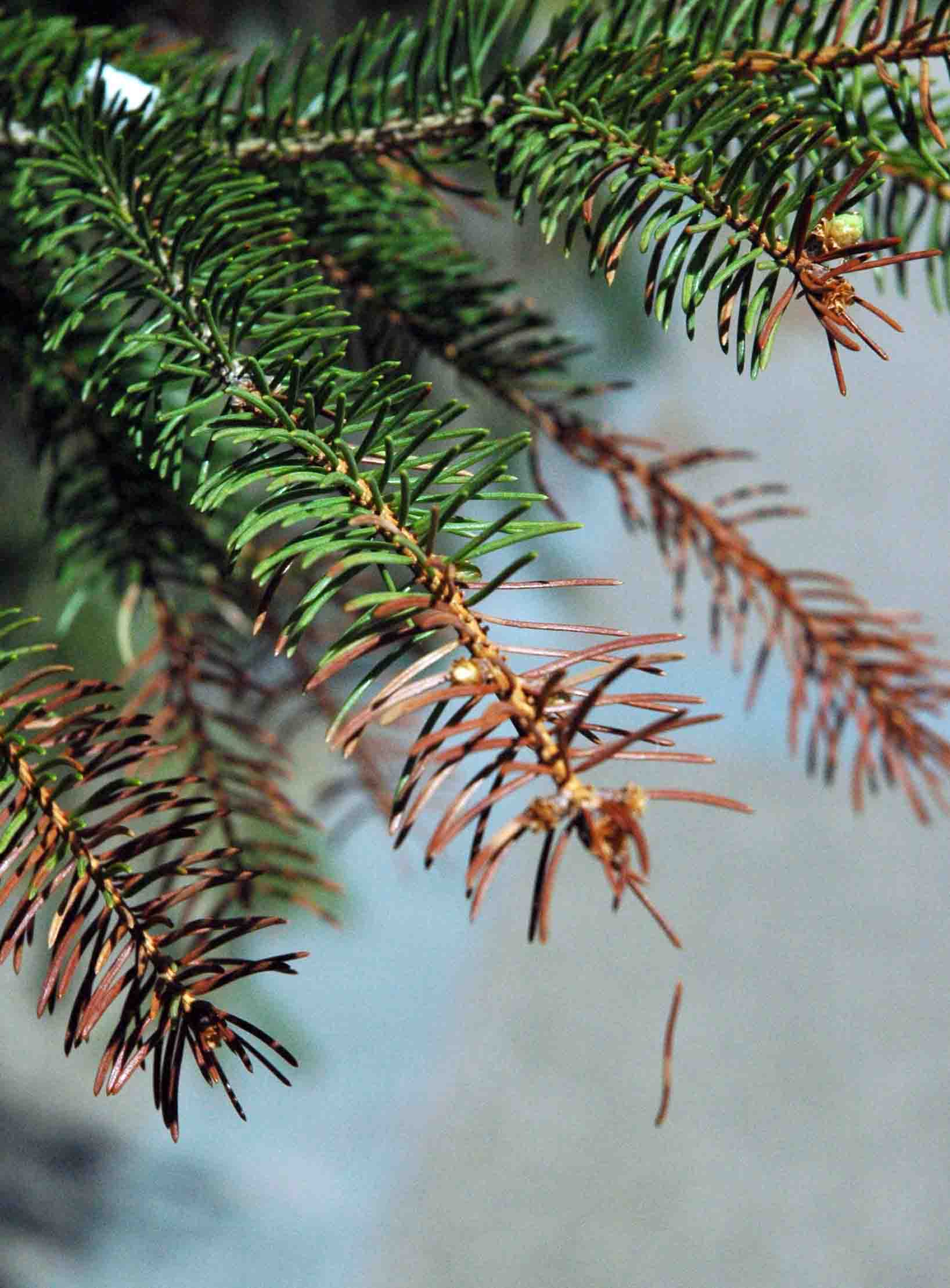
A few of you bravely hazarded guesses about this plant, and while it is a contorted specimen, it’s actually Ulmus glabra ‘Camperdownii’, otherwise known as Camperdown elm. Here’s a photo of a lovely example at Marymoor Park near Seattle:
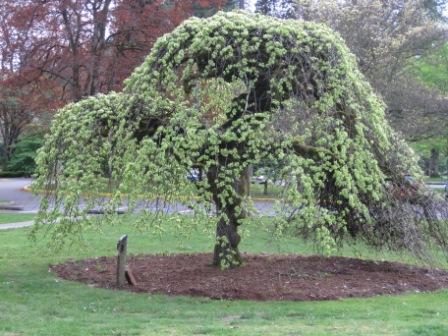
As plant geeks already know, this odd tree was propagated from a mutant branch discovered on the Earl of Camperdown’s estate in Scotland in the 1800s. All Camperdown elms are grown from cuttings originating from this single tree grafted onto a Ulmus spp. rootstock which supplies the straight trunk.
Though these trees don’t get terribly tall, they can become quite broad and need space for their tiers of foliage. Like other contorted trees, the branches of old Camperdown elms can meet and fuse, as you can see in the photo from Friday. And while the tree produces scads of seeds (that’s what you see in the photo above – not leaves!), they are sterile.
Every once in awhile I become infatuated with some idea and can’t stop for looking for information on it. It usually starts when I want to find a good quote for a particular article or column that I’m writing and then ends up swallowing two or three days. Well, it happened to me again yesterday and spilled over into today. I’m currently finishing up a project with an old friend of mine from college who happens to be a political science professor at the University of North Carolina Charlotte. We’re looking at certain environmental issues and the stances taken on them by both the left and the right. Anyway, I wanted to make a point about biotechnology — that point being that when we graft two plants together we often get different chemicals in the plant which we grafted onto the rootstock than we would get if the plant were growing on its own roots. This is because many chemicals can be translocated from the roots to the leaves or even the fruit. Anyway, I quickly found a number of nice scientific articles to back up my statement, but I also found some other fascinating information about, of all things, tomatoes. There are many plants related to tomatoes that tomatoes can be grafted onto. For example, every spring our plant propagation class grafts potato roots to a tomato top. Tomatoes can also be grafted onto eggplant (which is actually very useful because eggplant roots are very resistant to flooding unlike tomato roots).
While the above examples are interesting, they’re also relatively common knowledge among horticulturists. Here’s the part that’s not common knowledge (or perhaps I should say here’s the part that I didn’t know about — I’ve been known to be ignorant of things that other people consider common knowledge before). Tomatoes can be grafted onto tobacco, and, if they are, they will have nicotine translocated to their fruit — not a lot mind you. Most of the nicotine ends up in the leaves and stems of the tomato plant, but still, why couldn’t a nicotine-laden tomato be developed which could help smokers kick the habit — in a semi-healthy kind of way?
I also found that tomatoes could be grafted onto jimson weed. Big mistake there. Jimson weed develops some pretty nasty alkaloids, and they end up in the tomato fruit. So, if you eat the fruit, your done for. In fact, I found an instance where 5 people were killed because they ate tomatoes grafted onto jimson roots. I am now curious about what happens if you graft tomato onto deadly nightshade — but not curious enough to actually try it.